UBPML Referenz
UBPML Notation
Download UBPML Notation Overview in PDF format
Notation
|
Semantics
|
Conformity
|
|---|---|---|

|
A class
|
UML standard |

|
An instance of a class
|
UML standard |

|
A class in a certain state
|
UBPML |

|
A class in a certain state. The state itself is also declared here, and that by specifying a condition, which true and only true if that state is given.
|
UBPML |

|
An instance of a class in a certain state.
|
UML standard (seit 2.0 in Aktivitätsdiagrammen) |

|
A certain system state, defined by a set of classes (i.e a Constellation) in certain states, as well as optionally additional constraints that have to be met by that classes and their relationships. A Constellation is a UML class, i.e. dervied from Class in the metamodel.
|
UBPML |

|
An instance of a Constellation, i.e. a set of instances in certain states, which satisfy the constraints of the Constellation-class.
|
UBPML |

|
A Step denotes a change (transformation) of the system from one constellation into possibly several alternative other ones. It is thereby the elementary unit of a planned change. A Step is a UML class, i.e. dervied from Class in the metamodel.
|
UBPML |

|
An instance of a Step. Diagrams containing Step instances may serve to describe Projects. Thereby it is possible to describe Projects and Processes within one uniform notation.
|
UBPML |
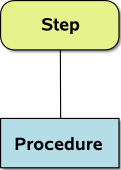
|
A Step describes what shall be done, which change shall happen. It does not fix how this is achieved. The latter happens by assigning a Procedure to the Step. There are different types of Procedures: manual instructions, a refined proceeding or execution of machine operations (invocation of a service). Refined proceedings then may be described with UBPML Steps or BPMN- resp. UML-activities.
|
UML standard |

|
Each Step is associated with exactly one initial Constellation, as well as at least one but possibly several final, mutual exclusive ones. The relationship arrows are borrowed from state transition diagrams (transitions) and named Transformation here.
|
UBPML |

|
An instance of a Step connected to Constellation instances. This notation is useful e.g. in project diagrams.
|
UBPML |
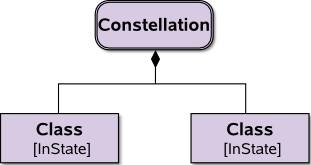
|
Shows the details of an constellation as an aggregation: a Constellation consistsof classes in a certain state, these classes are shown.
|
UBPML |
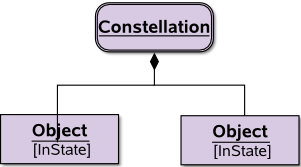
|
Shows the details of a Constellation instance as an aggregation
|
UBPML |
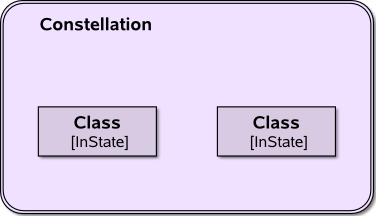
|
Alternative way of showing the details of a Constellation, corresponds to the previous presentation as an aggregation.
|
UBPML |
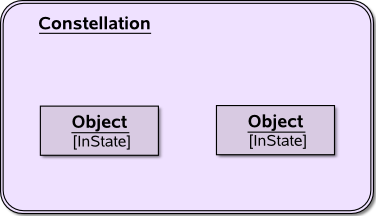
|
Alternative way of showing the details of a Constellation instance
|
UBPML |
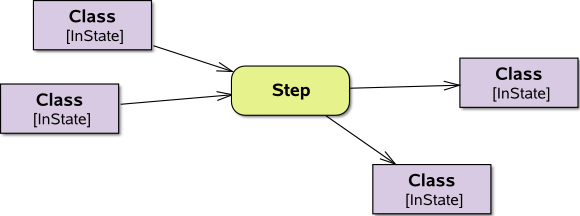
|
Instead of showing a Constellation the constituting classes in a certain state are directly connected to the Step. This is just a simpler way of presentation, there are implicitly (anonymous) Constellations defined, too. If a class in a certain state is referenced multiply in different roles, the rolenames are used to ditinguish this.
|
UBPML |
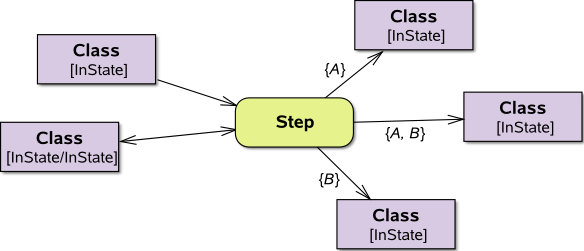
|
Since one and the same resulting class might exist within several target Constellations, the respective Constellations can be declared as relationship conditions.
|
UBPML |

|
Since Steps are classes, of course they may contain attributes. The initial and final values of these attributes at the beginning and end of the transformation can be specified at the transformation relations.
|
UML standard |

|
A multiplicity of 1 at the initial transformation arrow at the side of the Step says, that for each initial Constellation instance exactly one Step shall exist. In other words, the processing is initiated automatically. Alternatively, by declaring a sequence of points in time (e.g. "1st monday of each month" ) at a timer symbol, a automatically recurring instantiation is defined. E.g., this is useful if the existence of initial raw material is desired.
|
UML standard/UBPML |
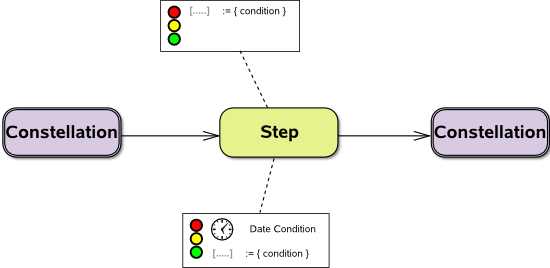
|
This symbol associates an error state condition to an arbitrary class of a UML model, basically it is just a simplified notation of a UML condition. By associating such conditions to Steps also gradually problematic - and not just fatal - processing conditions can be expressed and made analyzable.
|
UBPML |
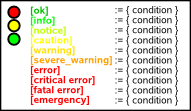
|
Possible problem states
|
UBPML |

|
By attaching Actors to processing steps it's responsibility is expressed. There are different types of responsibility available.
|
UBPML |
Possible responsibility types.
|
UBPML | |
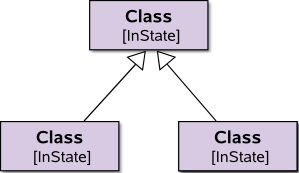
|
Also classes in a certain state are derivable from each other.
|
UML standard |

|
As classes also Steps can be derived from each other.
|
UBPML |

|
It might be useful in project diagrams to express the completion of a state partially.
|
UBPML |
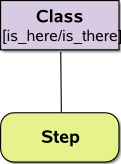
|
Also "Locations" are just a special kind of States, therefore the transfer of an object is expressed in the same way.
|
UBPML |
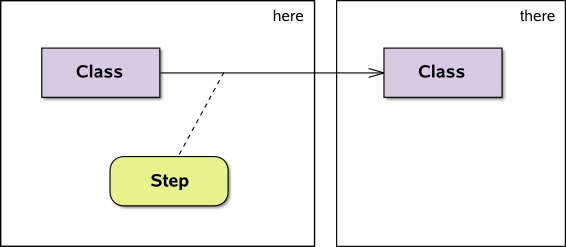
|
This notation, which is just a simplifying form, the transfer of objects is shown clearly. The presentation is intentionally similar to swimlanes.
|
UBPML |